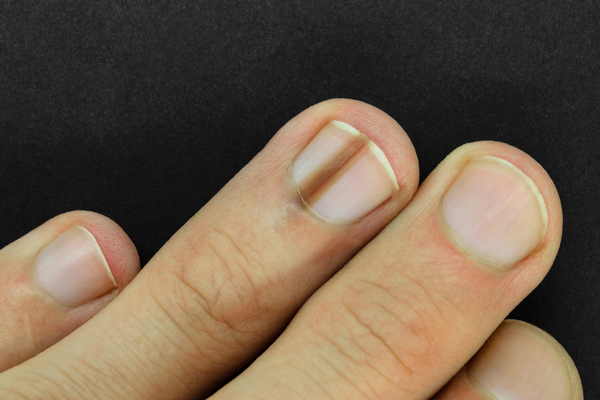When checking the body for signs of skin cancer, many people may only think to check their skin. However, it’s important to check the nails, too. Although rare, skin cancer, including melanoma — the deadliest form of skin cancer — can develop under and around the fingernails and toenails.
Subungual is a type of melanoma that starts under the nails. “Subungual” is a Latin word meaning “beneath the nail or claw.” The early signs of subungual melanoma are not always noticeable when they occur under the nails. This makes subungual melanoma particularly difficult to detect and treat early. The best way to find skin cancer on your nails early, when it’s most treatable, is to know what to look for and regularly check your nails.
How to Check your Nails for Melanoma
According to the American Academy of Dermatology (AAD), when checking your nails for melanoma, you need to look for the following changes:
- A dark streak. This may look like a brown or black band in the nail — often on the thumb or big toe of your dominant hand or foot. However, this dark streak can show up on any nail.
- Dark skin next to your nail. When the skin around your nail becomes darker, it could be a sign of advanced melanoma. A person may mistake it for a bruise.
- Nail lifting from your fingers or toes. When this happens, your nail starts to separate from the nail bed. The white free edge at the top of your nail will start to look longer as the nail lifts.
- Nail splitting, which occurs when a nail splits down the middle.
- A bump or nodule under your nails. You might also see a band of color on your nail. It could be wide and irregular or dark and narrow.
- One of the key indications of subungual melanoma is “Hutchinson’s sign.” This is when a person has nail pigment that extends onto the skin surrounding the nail.
- Subungual melanoma occasionally occurs without the distinctive pigmented streaks. In these instances, a person may experience other symptoms associated with subungual infections, including changes to the nail itself, bleeding, and pain at the nail bed.
The Biggest Risk Factors for Subungual Melanoma
According to Medical News Today, the most significant risk factor for melanoma is prolonged exposure to the sun and ultraviolet light. However, subungual melanoma appears to be unrelated to sun exposure.
Other risk factors for melanoma include:
- having many moles or abnormal moles
- having fair skin and light hair
- having freckles
- having a family history of melanoma or other skin cancers
- having a condition that causes a weakened immune system, such as HIV
- being older
- being male
It is also important to note that subungual melanomas are the most common type of melanoma among African Americans. It is the most common variant of malignant melanoma among African Americans, Asians, and Hispanics. It accounts for 75% of melanomas in African populations, 25% in Chinese populations, and 10% in Japanese populations.
Nail melanoma is often diagnosed at a more advanced stage than melanoma on the skin, making it more dangerous for your health. If you notice any changes to your nails, including a new dark band on your nail, make an appointment to see a board-certified dermatologist.
To find a board-certified dermatologist in your area, visit Find a dermatologist.
—
Photo Credit: Rytis Bernotas / Shutterstock.com
